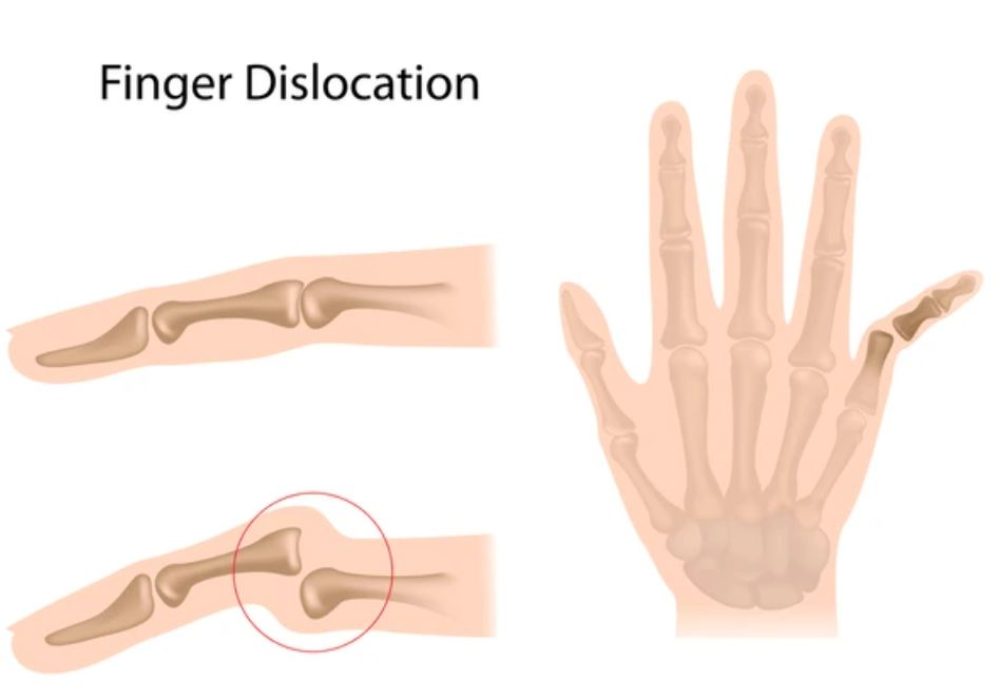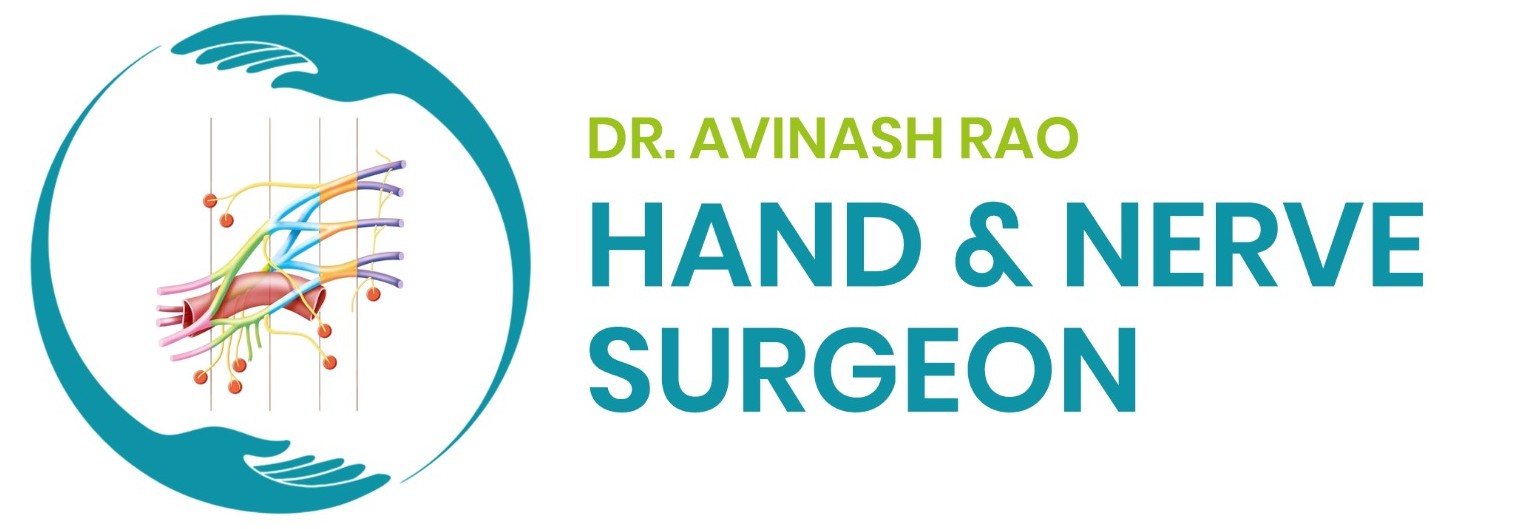
Identifying and Treating a Dislocated Finger
You may have a dislocated finger if your finger bone appears dislodged or crooked. This condition is typically painful and requires medical attention. Trying to pop it back in yourself can cause further injury.
Every finger has three joints. The thumb has two joints. These joints allow our fingers to bend and straighten. When any two bones are forced out of place at the joint, such as by a traumatic sports injury or a fall, the finger becomes dislocated.
When a finger is dislocated, the bones are no longer together and are out of alignment with the joint. The most common joint to experience dislocation is the proximal interphalangeal (PIP) joint. This is the middle joint of the finger.
Symptoms
You may have a dislocated finger if:
- your finger joint looks crooked or misshapen
- your finger bone appears dislodged, such as sticking out to one side
- you have swelling and bruising around the joint
- you have pain around the joint
- you are unable to move your finger
Causes
Many dislocated fingers are caused by sports injuries, especially sports played with a ball, such as football, basketball, and volleyball. Falls and accidents are other leading causes.
Sports injuries
In one study looking at upper extremity injuries among National Football League (NFL) players, researchers found that 17 percentTrusted Source were PIP dislocations. That’s because when you’re trying to catch or block a ball, a finger can easily get “jammed.” This happens when the ball hits an outstretched finger with such force it hyperextends it backward, pushing the bones away from the joint.
Fall
A dislocated finger can also occur when you put out your hand to break a fall. The impact from the fall can push your fingers beyond their normal range of motion and out of their joints.
HAND PROBLEMS
- Fractures and Dislocations in Hand
- Metacarpal & Phalangeal fractures
- Ligamentous injuries of fingers & Thumb
- Dislocations of finger joints
- Swellings of Fingers & Hand
- Compartment Syndrome
- Mucous cyst
- Ganglion cyst / Retinacular Cyst
- GCT of Tendon sheath
- Enchondroma (Benign Bone Tumor)
- Squamous cell carcinoma
- Dupuytrens Contracture
- Post Traumatic Contracture
- Post Burn Contractures of fingers
- Volkmann Ischemic Contracture
- Stiff Fingers & CRPS
- Stiff joints of fingers and hand
- Osteoarthritis of Hand
- Finger joint arthritis
- Thumb Basal joint arthritis
- Acute Infections of Hand
- Finger Pulp Infection (Felon)
- Nail Fold Infection (Paronychia)
- Finger Infection (Flexor Tenosynovitis)
- Palm Infection (Deep Spaces of Hand infection)
- Joint Infections in Hand & Wrist (Septic Arthritis)
- Human & Animal bite injuries to hand
- Diabetic Hand Infections
- Bacterial / Fungal / Atypical Hand infections in immunocompromised patients
- Subungual Hematoma
- Nail bed injury
- Nail Deformities
- Glomus tumor
Make Your Appointment
Accident
A crushing blow to a finger, like closing a door on your finger, can also cause bones to separate from the joint.
Genetics
Some people are born with weak ligaments. Ligaments are tissues that connect bones at the joint and provide structural support.
Is it a medical emergency?
You should seek medical attention if you suspect a dislocated finger. When you dislocate a finger, your finger may also be sprained or broken. Sprains and breaks share similar symptoms to dislocation, so it can be difficult to determine which injury you have without seeking help.
Delaying treatment or trying to diagnose and treat the finger yourself can lead to long-term loss of mobility and joint stiffness.
Diagnosis
Even if your doctor suspects your finger is dislocated by looking at it and talking to you about your symptoms, you may still need an X-ray to rule out broken or fractured bones.
Treatment
Immediately after a dislocation, avoid popping the finger back into the joint yourself. You could injure underlying structures, sometimes permanently, like:
- Blood vessels
- Tendons
- Nerves
- ligaments
Instead, ice your injured finger and keep it immobile. To ice, wrap ice in a towel or use an ice pack. Do not apply ice directly to your skin.
Do not drink or eat anything in case surgery is necessary.
You should get medical help right away. Here are some things a trained medical professional may do:
Reduction
Reduction is the medical term for repositioning the bone into its proper place.
You may be given a local anesthetic to numb your pain during the procedure. Your doctor will press against the bone to free it if a piece is still wedged into the joint, and then pull the finger outward to get the bones back in place.
Splint
Once your bone has been repositioned, your doctor will splint it to keep it stable. A splint prevents you from moving and possibly reinjuring your finger. You’ll likely need to keep the splint in place for a few days to a couple of weeks, depending on the severity of your injury.
Buddy tape
In addition to a splint, or sometimes instead of a splint, your doctor may use medical tape to bind your injured finger to an uninjured one next to it. This method adds more support to the dislocated finger and may allow early motion to prevent joint stiffness and loss of motion.
Surgery
In some cases, you may need surgery to reposition the bones and repair any fractures or torn ligaments. Surgery is generally only used when reduction fails to stabilize the joint, or if you have complicated breaks and fractures.
Recovery
Physical therapy or occupational therapy may be prescribed once the finger has recovered enough to remove the splint. A trained physical therapist will guide you through exercises. Your physical therapist may also offer heat and massage therapies to help reduce stiffness and increase mobility in the joint.
You can usually return to your normal activities, including sports, within a few weeks following your injury. But it can take up to six months for your finger to fully heal. In some cases, especially when the dislocation is accompanied by a serious break or medical treatment is not prompt, pain and stiffness can be long lasting or even permanent.
